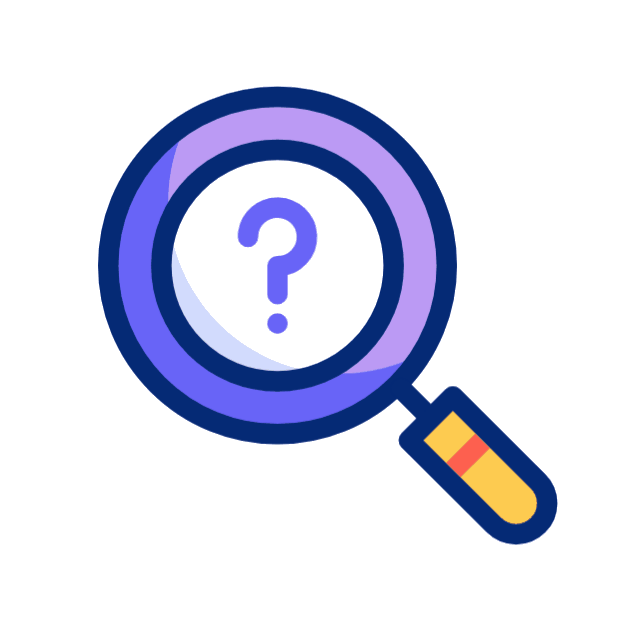
Introducing Professor David Michael Boje, a seasoned educator with four decades of experience and an intriguing foray into quantum shamanism. In his captivating MysticMag interview, we explore the essence of the True Storytelling System and delve deep into the fascinating realm of quantum shamanism, an endeavor that extends beyond typical narratives into an enigmatic world of spiritual insights and connections.
Can you please introduce yourself to our readers and share a few details about your professional journey?
I’m Professor David Michael Boje. I’ve been a professor for 40 years. I’m retired now, but I’m also an honorary visiting professor at Fisk University in Nashville, Tennessee. My career has been all about storytelling. I’ve written around 30 books and 150 articles all trying to explain, develop, and give examples of what I consider organizational storytelling. Later in my life, I got into quantum shamanism, which has become a big part of my life and has helped me and my wife.
What is the True Storytelling System?
True Storytelling System is composed of 7 processes that I focus on in the book, a few articles we’ve done, and a new encyclopedia volume that’s coming out on business storytelling. I focused on the processes, and I call them anti-narrative processes, which represent all these things that a story or a narrative is composed of. I see storytelling as a process, and I’m not focused on a particular narrative, as I found those pretty fixed and arbitrary, while the processes are always in the middle of developing, informing, and unfolding.
- The 1st process has to do with beneath, which is about the ways in which a narrative that sticks true is abstracted from being made into concepts and models. It’s about cause and effect. However, my personal stand is that we don’t really know what a cause or an effect is. We just attribute causes and effects, and a lot of times we’re wrong. That’s why we form groups and do what I call together-telling.
- The 2nd one is related to the fact that organizations and people in power often rehistoricize their past. The pasts are multiple and to pick out one is kind of very arbitrary.
- The 3rd one is about the future. Paths don’t come just from the past, but also from the future, as I see time differently from most people. The changes are coming with the future, so people are betting on the future, investing and hiring people based on it, for example, and they are impacting the present. They are impacting being.
- The 4th process is being and refers to how we are in space-time, mattering. We ask ourselves, “What is the story of these things? Where and how did they come to be in this space?”. We try to understand being based on the past and the future, and how they affect it.
- Number 5 is becoming. As the being is affected by the beneath, past, and future, it becomes a different thing.
- Number 6 is who is telling the story. Here we have the ego, the social who, corporate who, with each of them affecting the teller and, in that way, the story, as well.
- The 7th one goes beyond what is this space-time mattering of being. It’s the spiritual element and your interaction with the world. Here I’m looking at a deeper reflective process that involves a lot of meditation, a lot of interaction. Your understanding of the world affects who you are as a person and how you tell the story.
Those are the 7 anti-narrative processes that shape all stories and narratives told in the world. I see storytelling as a process where you’re trying to use your limited sense-making skills to understand the world. But you don’t quite ever get there.
To people unfamiliar with it, can you explain quantum shamanism?
There are a lot of different kinds of shamanism in the world. Depending on where you get your information from, shamanism is 10,000 to 50,000 years old. When humans were in the caves and coming out of them. In most communities, there would be someone who played the role of a shaman, a medicine person, or a seer.
My wife and I practice Jainism, which comes from India. They talk about Jains, compassion for all life, vegetarianism, ahimsa (non-violence), etc. What I’ve been doing is trying to understand what would a shamanistic practice be in Jainism. That’s one strand of quantum storage. The other thing is to understand this notion of the energy that we experience in our body and the relationship of energies in nature and in the cosmos. In the quantum world, there are 2 basic kinds of authors when it comes to the quantum realm. One takes a physics approach that leaves no room for spirituality. It just focuses on mechanics and physics. The other group is mostly physicists, like Alan Wolf, for example, who talk about quantumness as a spiritual understanding of the forces of nature and the forces of aliveness that we have. Then you can further subdivide the spirituality group. Some people represent the stance that there is only one God, like in Jewish or Christian religions. However, there are no goddesses in their beliefs.
Then you have other spiritual beliefs where there are a lot of gods and goddesses, like in India. There are Gods of different Things. On that note, Jainism doesn’t believe in one God. There are many of them, but there’s no one God who created the whole universe. The universe is energy, and those forces always existed and will always exist. They don’t subscribe to the idea of the universe coming to an end. Planets, stars, and solar systems might, but not the universe itself.
How did you personally get involved in it and in what way was it helpful to you?
I got started in shamanism around 11 years ago. I flew to California flew there from New Mexico because my wife’s Arabian stallion was dying. He was everything to my wife. She’s known him for his whole life. She raised him and rode him in competitions, as well as for leisure. They just had a great relationship. I rode him too, and it was a fantastic horse. At the time, he stopped eating and was basically dying, and I used my shamanic training to get in touch with his spirit down in lower. Then I also connected with my power animal, which was a dragon at the time. That way, I got insight into what to do through working with the water and spirit, and I got him to drink water again. He hung on another year or so, but it was clear in the shamanic meditation that he wanted to go. I did my shamanic drumming and drummed while the veterinarian came out and put him out of his misery. However, ever since he died, he started coming back into our dreams. My wife and I felt a strong spiritual force. While he was alive, people used to come from all over just to get in touch with his powerful energy. We used to ask him questions. Now, you may wonder how would you ask horse questions. Well, you take a couple of strands of rope and put it on the fencing and you see which one he pulls, or you put your hand down and say, “That means yes and that means no”.
I did the matrix energetics training with Dr. Richard Bartlett. I went to several of those trainings and more of the Michael Harner trainings in core shamanism. As an anthropologist, he studied shamanic practices around the world and found similarities between shamanic practices around the world. For example, they all use drums or they all go to lower or the upper world. He called that core shamanic practices. However, had a falling out of sorts with core shamanism because I became concerned that, in my own belief system and Jainism, it wasn’t a part of the practice because they don’t use drums, they don’t believe that a god created the world/universe, etc. They believe that it’s karma that we attract by our thoughts and actions. They have this concept of karmic quantum particles and some Jaine writers write about them.
You get into rigid thought structures and actions and then it takes a while, or it may never happen, that you come out from under these karmic practices. So, one of the differences is that in Harnerism, which is a particular brand of shamanism, there’s no reincarnation. You’re here once, you die, and you go into upper world or lower world and you’re there forever. That was kind of a strange belief system and I didn’t think it really matched the belief systems around the world. Certainly, it’s very good for Christianity, Judaism, Islam, etc., but it didn’t match my belief system, so I had to bail on Harnerism. That meant opening up a different kind of shamanic practice and I did face-to-face shamanism with people here in Las Cruces, and then we had Covid, which resulted in me going online and doing weekly Zoom meetings. I had this group of 10-15 people who had been meeting for years. So, I had an obligation to that group and so I said, “Look, we’re going to have a whole set of shamanic practices this year. You can do Harnerism, or you can do indigenous practices where you don’t buy into Harnerism, or you can do Jainism, or whatever else you want to do. If you want to do angel work or drumming, do it”.
We have a check-in of intentions relating to what people want healing for. Then we do what we do some drumming, but we don’t all do it with the people. Sometimes we just to it and we don’t all go to upper or lower world. I just fall back into the spiritual world, being a Jain sear. A Jain sear does chakras, while Harnerism doesn’t do chakras. In that sense, you could say that I’m a bit restrictive. I don’t stand boxes. The bottom line is that quantum shamanism tries to understand the quantum forces of the universe and of our own bodies.
When I got cancer, I realized that you never get rid of it. There were billions of cancer cells in me, mainly in the prostate and lymph nodes. I did some interaction with a shaman who studied in Mexico with other shamans, and Buddha came to me while he was singing and I was playing a drum. It might’ve been a song that I’m playing the drum. That’s okay, Buddha came into, and I think it might have Mahavira, but the only image I had was of little Buddha. Since then, people have been sending little Buddha statues to me. From that moment, I decided that I would treat cancer as a positive life force, a positive being. It has the spirit, as in Jainism, the smallest macromolecules, the quantum atom, the subatomic particles, the quantum quark, they all have spirit. So, they’re all animated beings of spirit. In Jainism, there’s respect and empathy for all levels of life.
During this process, that quantum shaman group was a support group. Now other people come with cancer, and I support them. We don’t say “Heal!” and then your cancer’s gone. Of course, we want to get to that point, but what a shaman does in a community is help people make decisions and to be there for support. We do ceremonies for healing, but we’re not idiots to think that the cancer will just disappear after a ceremony. However, I do believe that everything has an aliveness. Even the rocks are alive. They just move really slowly and they crumble and recompose really slowly. There are animations in all forms of life and even in some forms of what you would consider non-life. The important thing is to be non-violent and respect all life as much as you can. All manufacturing processes do some harm to subatomic, animal, or plant life, so you can’t run away completely, but you can minimize the violence and engage in non-violent processes as much as you can. I don’t expect it to take off and get a big following. It’s more me trying to sort out who I am and what beliefs make sense to me and to my wife. It’s good to be married to somebody who has similar beliefs.
You are also a part of the Enthinkment Circle. What can you tell me about that part of your work?
I wrote a book, which is still in typing, about my lead professor at the University of Illinois Urbana-Champaign and my mentor, Lewis Ralph Pondy. Then I gave the book to one of my doctoral students, Ronnie Saylors, to write a book about me as a mentor based on my writing about Lewis. The word “enthinkment” was used one time by Louis Ralph Pondy during a walk. During a discussion on how we understand the world, Lou said, “You know, that would be an ‘enthinkment’ way of understanding the world”. What happened to the word “Enthinkment”? It almost came across as a joke because at the time it was all about sense-making: we smell, taste, hear, touch, and speak.
But do we really understand the world with these senses? Lewis started to make a point that we need to look at how we think about the world, and that’s different from our sense-making of the world. I decided I would pick up this notion of the construct “enthinkment” and try to define what it is, which is a notion of the limits of sense-making. Then, I looked deep into what Lou Pondy was doing. I took every article, book chapter, conference, and presentation on Lou Pondy I could find. In my book, I go through every one of them and I compare the differences between them. Lou was just swimming in the abstract. In his last presentation before he died, he said that in his early thinking, he thought that the moment people get together, they cooperate, and conflict was an exception. However, as he aged, he concluded that conflicts were mainly the rule, and cooperation was the exception in organizations he had a chance to meet. He was teaching me how to think, how to think through a problem and redevelop it. That’s what I’ve been trying to do with storytelling throughout my career – to rethink and redevelop it.
Based on that, we created the Enthinkment circle here. It meets every Tuesday in New Mexico. You’re always welcome to stop by, and people do stop by. I usually try to do a little 15-20-minute presentation. Afterward, people check in on how life is going for them and it’s like a support group. People all write their own stuff and do their own thing. We have dialogues and presentations, and think about “Enthinkment.” We go through Heidegger a lot because one of the members of the “Enthinkment”. One of the members, Sabine Trafimow, who is German, goes through the German translations of Heidegger’s books, and I read the English translations. Then we talk and present our ideas about. We often discuss “being”. For example, for Sabine, it’s “being in the world” and “being in space and time”. It’s about the history and the concept of time. So, the “Enthinkment” circle is an attempt to understand various philosophical texts, not just Heidegger, but many others like Walter Benjamin, Donna Haraway, and Hannah Arendt. We go through weeks where we focus on one philosopher and then move to another and then to another.
Is there anything else that you’d like to add?
I’d like to say that listening is more important than storytelling. I think we live in societies where people don’t listen to one another. I’m trained as an ethnographer, and I taught ethnography at UCLA, and I taught qualitative ethnographic processes almost throughout my 40-year career. The main thing in ethnography is to learn to listen to people in their cultural milieu.
I was talking to Eduardo Barrera Herrera, who’s from the Shawnee tribe, and he was telling me that the kind of ethnography he likes is the four seasons ethnography. There’s in relation to the theory that you should be in the field enough to experience all four seasons with somebody. Then you may have a chance of understanding a good part of their story. I think that that’s a pretty cool definition of the kind of work it takes to understand the storytelling of another person.
Most people don’t even know their spouse. The husband doesn’t understand all about the wife, and vice versa. It doesn’t mean that they don’t love each other, but it requires a lot of communication to try to sort that out. It also doesn’t mean that one, or the other is wrong. It just means that there’s a lot to uncover about a person or even an animal. We never get to the whole understanding. If we think that we got a person all figured out, they’re going to do something that’s just going to surprise us.



